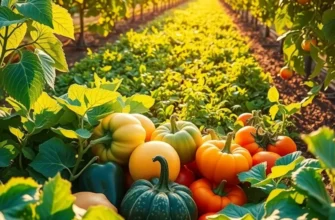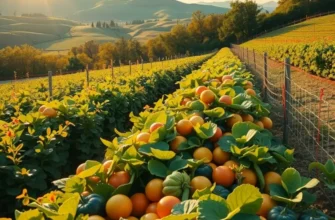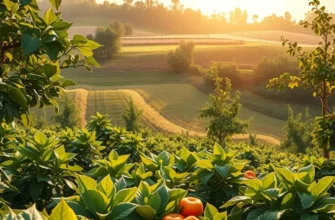The food choices we make have a significant impact on wildlife and ecosystems. By understanding these impacts, environmentally-conscious individuals can make informed decisions that not only nourish their bodies but also protect habitats and biodiversity. This approach encourages a lifestyle where our dietary preferences align with the well-being of our planet.
Sustainable Eating: The Power of Plant-Based Diets

Embracing a plant-based diet offers a compelling route to promoting wildlife conservation and reducing environmental impact. Animal agriculture remains a leading cause of habitat destruction, contributing to the loss of vast ecosystems crucial for wildlife survival. Studies indicate that around 80% of global deforestation results from the expansion of agriculture, with livestock farming playing a significant role. Each acre converted for animal feed disrupts the delicate balance of nature, displacing countless species.
Choosing a plant-based diet mitigates these impacts. Less land is required, and the demand for feedstocks diminishes, allowing ecosystems to flourish. Additionally, plant-based diets have a much lower water footprint compared to animal-based diets. Producing one pound of beef requires approximately 1,800 gallons of water, while the same amount of tofu requires about 300 gallons.
Opting for local and organic produce further enhances these benefits. Organic farming practices avoid harmful pesticides that can decimate insect populations, which are vital for the pollination of plants and as a food source for other animals. Meanwhile, purchasing local produce reduces carbon emissions associated with transportation, supporting both environmental health and community economies.
Transitioning to a plant-based diet can be a seamless and rewarding process. Start by incorporating more plant-based meals gradually. Try a “Meatless Monday” to explore new recipes and identify delicious alternatives. Focus on meals built around vegetables, grains, legumes, and nuts. These ingredients are not only versatile but also packed with essential nutrients.
Meal planning can ease this transition. Prepare meals in batches to save time and ensure you always have plant-based options readily available. Consider exploring practical ingredient batching techniques to further streamline meal preparation (as highlighted in this guide).
Sourcing sustainable ingredients involves seeking out local farmers’ markets or subscribing to a community-supported agriculture (CSA) program. These options provide fresh, seasonal produce, often harvested with sustainable practices in mind. As you become familiar with the flavors and uses of various plant-based ingredients, the transition will naturally become part of your lifestyle.
Reducing our reliance on animal agriculture is not just a personal health choice but a global imperative for wildlife conservation. By making mindful food choices and fostering sustainable eating habits, we contribute to preserving biodiversity and protecting our planet for future generations.
Smart Sourcing: Choosing Eco-Friendly Ingredients

The choices we make in sourcing our food can significantly impact wildlife and their habitats. Prioritizing eco-friendly ingredients involves understanding how our consumption habits affect ecosystems and taking steps to minimize these effects. Choosing to support local farmers who practice sustainable farming is an essential first step. By doing so, we ensure reduced transportation emissions and promote agricultural practices that preserve biodiversity.
Understanding labels such as ‘organic’ and ‘sustainable’ helps extend our commitment to wildlife conservation. Organic farming avoids synthetic pesticides and fertilizers, preserving soil health and reducing water contamination—vital for maintaining robust ecosystems. On the other hand, sustainability focuses on long-term ecological balance, encompassing fair labor practices, resource management, and biodiversity preservation. Both labels can guide consumers towards more environmentally mindful choices, despite differing focuses. Reading and recognizing these labels can guide us in choosing products that align with our eco-conscious values.
Our seafood choices directly affect ocean health. Unsustainable fishing practices lead to habitat destruction, overfishing, and the endangerment of marine species. Opting for seafood certified by organizations that promote sustainable fishing, such as buying varieties that are lower in the food chain, can mitigate negative impacts. These species reproduce quickly, contributing to a more balanced oceanic ecosystem.
Taking action requires more than understanding—it necessitates altering our shopping habits. Frequenting local farmers’ markets allows for direct interaction with growers, providing insight into their cultivation practices. Developing relationships with these farmers not only supports the local economy but also fosters community awareness regarding food sourcing. This encourages producers to maintain or adopt sustainable practices when they receive direct consumer feedback and support.
Reading product labels is an actionable strategy. Look for labels emphasizing ethical sourcing and minimal environmental impact. This practice ensures that the products we select contribute less harm to ecosystems, both terrestrial and aquatic. Educating ourselves on the nuances of these labels empowers us as consumers and affirmatively impacts wildlife conservation.
By implementing these strategies—supporting local sustainable agriculture, making educated seafood selections, and consciously shopping for ecologically responsible products—we contribute to the preservation of our planet’s biodiversity. For those interested in reducing waste while enhancing their eco-friendly practices, consider integrating insights from the eco-smart kitchen storage guide, which offers practical tips on minimizing waste through intelligent food storage and use at home.
Final words
Making conscious food decisions can significantly impact wildlife conservation and our planet’s biodiversity. By shifting towards plant-based diets and supporting sustainable ingredients, each of us can help protect fragile ecosystems. Remember, small changes in your eating habits can lead to substantial positive outcomes for wildlife. Every meal is an opportunity to make a difference, advocating for a more sustainable future.








